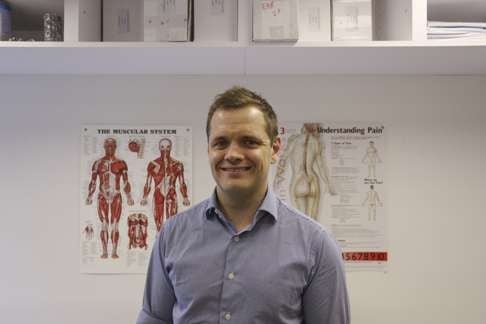
Hong Kong physio’s advice on how to carry bags and loads correctly to avoid injury
Backpack, tote, luggage or the humble shopping bag – there’s a right way to bear the weight and avoid painful back, hip, neck and shoulder issues
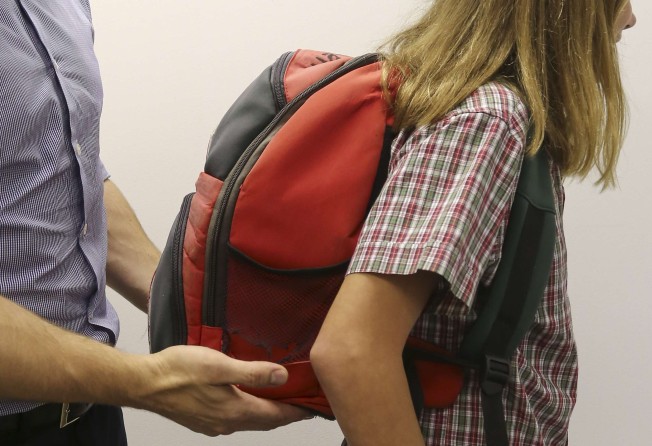
Is what you’re carrying more than just weighing you down? Regularly carrying heavy loads, and in the wrong way, puts you at risk of long-term musculoskeletal damage and potential spinal compression, say the experts.
“Whenever you carry too much weight, or distribute loads onto the body unevenly, you’re compressing the spine or you’re forcing your body to compensate by using other muscles, which creates asymmetry in the body,” explains Chris Sherer, a musculoskeletal physiotherapist working out of the ProHealth Sports and Spinal Physiotherapy Centre in Central.
You won’t feel the effects of a poorly carried pouch overnight, but you may feel it over time, and when you do it’s a real pain in the neck. Or shoulders, or lower back – the list goes on.
Overloading the body unevenly can also cause “postural scoliosis”, where the muscles on one side of the back are short, contracted and weak, or neural tension issues leading to numbness. Children who lug around heavy backpacks are most at risk.
“Carrying as little as possible, or nothing at all, is key to avoiding injury,” says Sherer. But, of course, that’s not always possible. Here are his tips to lighten your load, when you have to carry something.

1. Backpack is best
The backpack is the best way to carry anything, says Sherer. Combining it with a waist strap, adjusted so that the bottom of the bag sits at the waist, is ideal. “The idea is to have the load as close to the body as possible, with the heaviest portion of the load sitting on the waist.”
Sherer is not a fan of using the chest strap without the waist strap – “I find it pulls the bag in too tight, and pulls it away from the hips, which is not what we are looking for” – but combining the two additional straps helps to pull your load closer into the body and is more comfortable.
When using a backpack, particularly for children, Sherer stresses the importance of choosing the right size. “It should sit no higher than the top of your shoulders, and no lower than your waist line.
“If it sits too low, it pulls the shoulders back, which leads to an increased curve in the lower back, which may lead to back pain.”
To adjust your bag for the right fit, put it on your back and tighten the shoulder straps first before adjusting any waist straps so it sits tight on the hips. For children, Sherer recommends holding the bag up for them while they tighten the straps, which should be “comfortable, and not too tight”.
In terms of how much you should carry, “there is research that suggests you should carry only 15 per cent of your bodyweight – but it really depends on your strength”, with children naturally not being able to carry as much. For example, a 2013 study published in Pediatric Physical Therapy found that when a child carries more than 20 per cent of their bodyweight it can lead to bad posture and unnatural tilts in the neck and pelvis, which may lead to aches and pains.
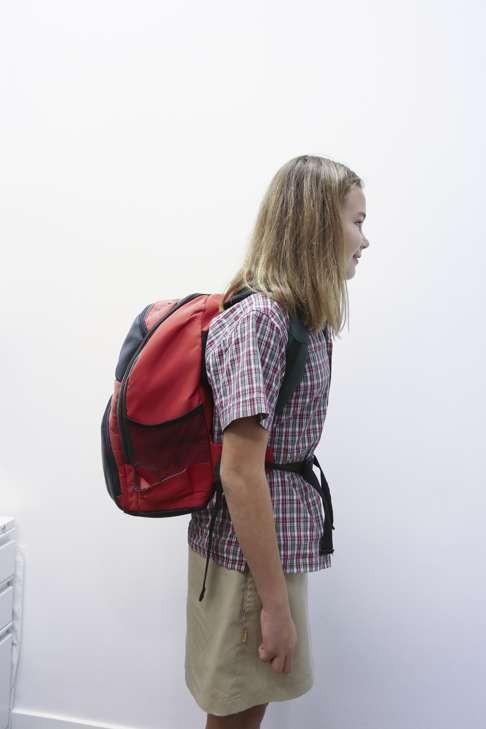
2. Single-strap bag: loop it and pull it in tight
Many people wouldn’t be caught dead wearing a backpack. Even Sherer admits he doesn’t like to wear a backpack during summer because of the “sweat factor”.
The next best thing is a one-strap bag, worn across the body (rather than on one shoulder) with the strap shortened so the bag sits flush against the body.
“For carrying heavier loads, loop the strap across the body and tighten it so as to keep it closer to your centre of gravity.”
It still leads to asymmetry, cautions Sherer. “Regardless of whether the strap of the bag is carried on one shoulder or across the chest, it’s still unevenly distributing the weight. This causes the body to “compensate” in one way or another, which may lead to strains and compression, because all of the load is still going through one shoulder.”
For example, when you carry a heavy bag on the right shoulder, the body instinctively reacts by activating the muscles around the hip on the opposite side to maintain balance. This ultimately leads to compression on the vertebral joints on one side, and overstretches the muscles on the opposite.
Sherer recommends “chopping and changing” by alternating shoulders regularly to distribute the weight.
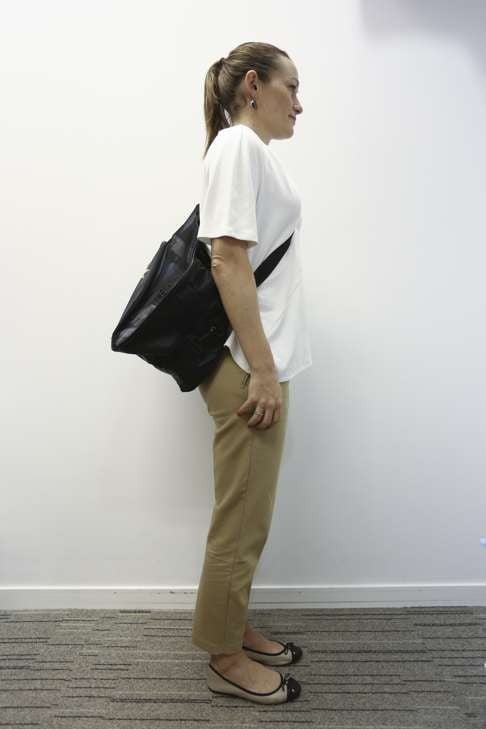
3. Avoid the tote and laptop bag
Any bag which forces you to carry heavy loads low and away from the body are the biggest culprits, says Sherer, who cites laptop bags as a classic example.
“When you walk, your arms should swing and flow fluidly, while your spine rotates and your hips flex and extend.” But when you carry a heavy bag in one hand, it reduces, or stops, one arm swinging altogether. “This leads to a shorter stride length and asymmetry, which leads to compression down one side of your spine and micro trauma.”
If you do have to carry these types of bags, he advises using any shoulder straps provided, or tucking it under your shoulder and holding the bag in close under the body.
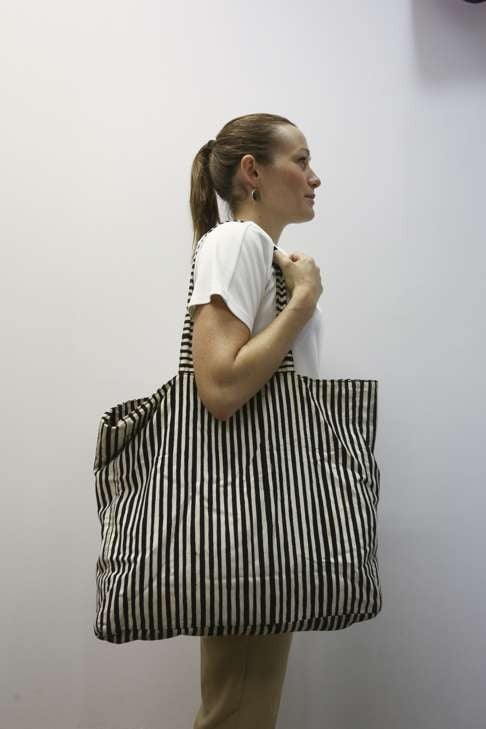
4. Keep handbags light and tight to the body
Firstly, to all handbag-carrying readers: ditch the junk. “When you take a look at what’s in these bags there’s often a lot more in there than needs to be carried. Take the opportunity for a clear-out. Particularly look to unload heavy wallets and coin purses.”
Like totes and laptop bags, he recommends handbags be carried under the shoulder and tucked in close to the body. Wide straps are best to distribute load across a wider area.
He also recommends alternating shoulders regularly, and even using a body strap if the bag has one available.
Even though celebrities and fashionistas do it, he cautions against holding a handbag in the crook of your elbow, or carrying it low with your arm outstretched to avoid the “lever” issues he stresses above.
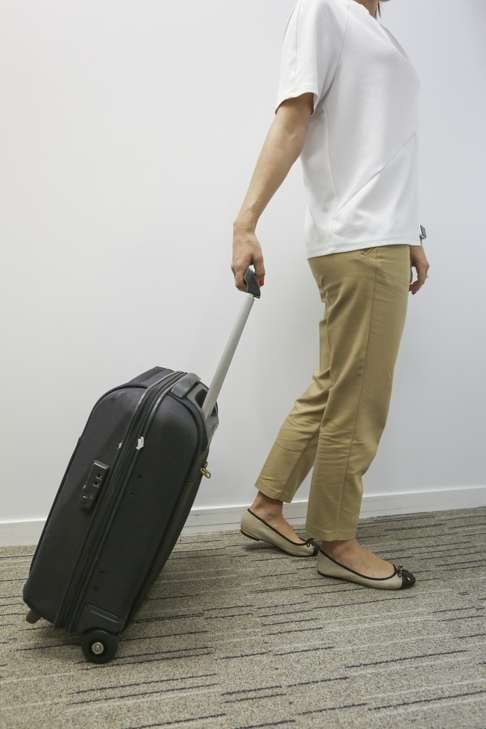
5. The wheel deal
Carry too much altogether? Consider using wheeled luggage, with four wheels being the best option to help the bag glide effortlessly. “Using four wheels enables you to keep the bag close to your body and reduces the load on one side altogether,” he explains. Carrying a bag with two wheels is less ideal as it forces you to twist your spine, putting extra strain on a lengthened trapezius muscle.
Get the handle length right, says Sherer. “If it’s too low it’s impossible to keep a neutral spine.”
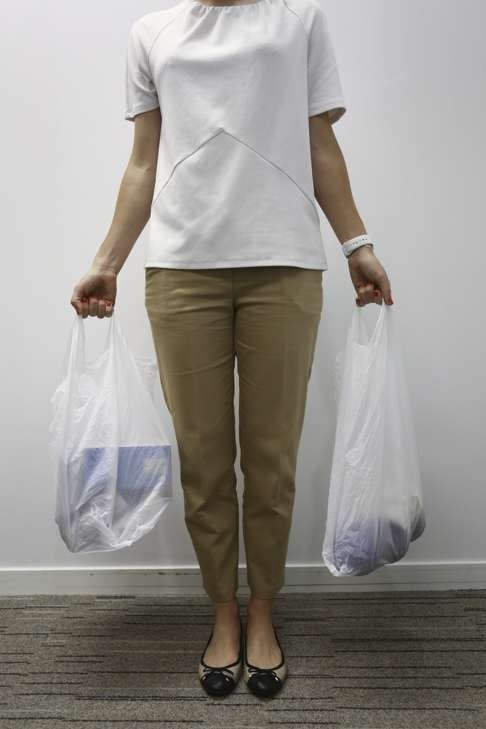
6. Spread the shopping load
Use two shopping bags rather than one and make sure your load is evenly distributed across the two bags. “Carrying two bags helps to distribute the load and avoid asymmetry.”
Take rests when needed, and even throw in a bicep curl or two. “Actively using other muscles in the upper body temporarily takes some strain off the main carrying muscles, which can help your carrying endurance.”
7. Carrying children
For parents, Sherer also has tips for carrying small children: make them walk as often as possible. “If your kids are old enough to walk, encourage them to do so as it is so much better for your back.”
If you are going to pick them up, tell them. “This will make them stiffen up and be easier to handle – a floppy kid is harder to lift and places unwanted stress on your body.” When lifting, get in close, tighten your core and bend your knees before lifting them up.
When carrying children in baby carriers, the best way is “keeping the child facing in with their legs wrapped around your waist”, he says. “Like carrying other loads, this keeps them within your centre of gravity.”
Avoid carrying a child on one hip at all costs. “It can lead to lower back, sacroiliac joint and hip problems.”